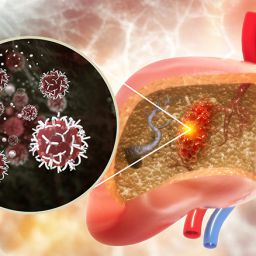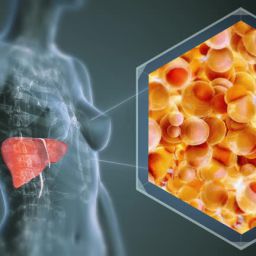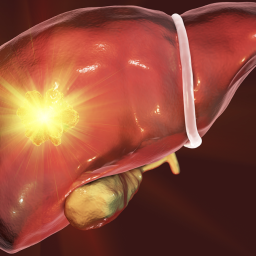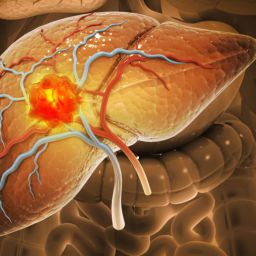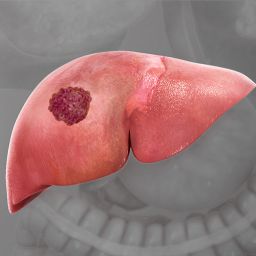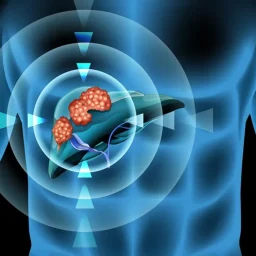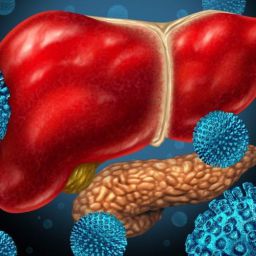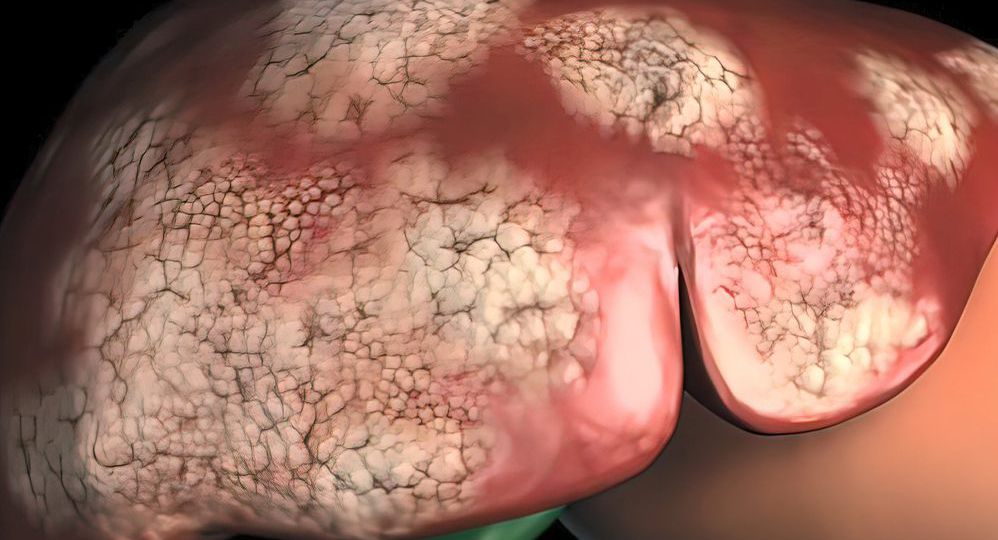
1. Overview of Liver Cancer
Liver cancer typically manifests as hepatocellular carcinoma (HCC), which accounts for approximately 75% of all primary liver cancers. HCC generally develops in the context of chronic liver disease, with cirrhosis being one of the major risk factors. While environmental factors such as chronic hepatitis B and C infection, alcohol consumption, and non-alcoholic fatty liver disease (NAFLD) are well-established contributors, genetic mutations and inherited genetic predispositions also significantly affect liver cancer risk.
Understanding the genetic mechanisms behind liver cancer is essential not only for identifying high-risk individuals but also for developing more effective therapies. In recent years, the role of genetic mutations and chromosomal alterations in liver cancer has become increasingly evident, opening the door for personalized approaches in both diagnosis and treatment.
2. The Genetic Basis of Liver Cancer
Genetic mutations and alterations in specific genes play a crucial role in the pathogenesis of liver cancer. These mutations can either be inherited or acquired, and their cumulative effect disrupts the normal functioning of liver cells, leading to cancer.
2.1 Inherited Genetic Factors
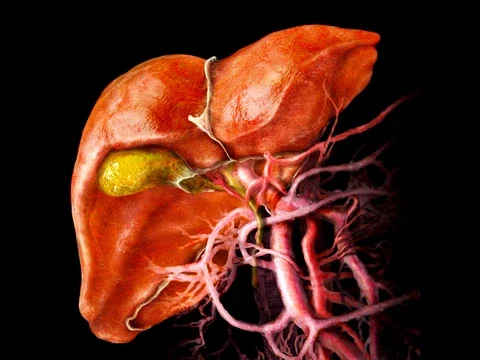
Although liver cancer is often associated with environmental factors, there is evidence that inherited genetic factors contribute to its development. Certain genetic mutations are passed down from one generation to another, increasing the likelihood of liver cancer in those who carry these mutations.
For instance, individuals with hereditary hemochromatosis—a condition characterized by excessive iron accumulation—are at a significantly higher risk of developing liver cancer. Mutations in the HFE gene that lead to this iron overload disrupt normal liver function and increase the risk of cirrhosis, which in turn predisposes individuals to liver cancer.
Additionally, genetic syndromes such as Wilson’s disease, which causes copper accumulation in the liver, and alpha-1 antitrypsin deficiency are linked to an increased risk of developing liver cancer. In both conditions, the accumulation of toxic substances leads to liver damage, fibrosis, and, eventually, cancer.
2.2 Acquired Genetic Mutations
Acquired mutations, which occur during a person’s lifetime due to various factors such as exposure to carcinogens, infections, or chronic inflammation, are more common than inherited mutations in liver cancer. These mutations typically affect genes that regulate critical cellular processes such as cell division, apoptosis (programmed cell death), and DNA repair.
Some of the key genes implicated in liver cancer include:
- TP53 (Tumor Protein 53): The TP53 gene is one of the most frequently mutated genes in human cancer, including liver cancer. TP53 encodes a tumor suppressor protein that regulates cell cycle arrest, apoptosis, and DNA repair. Mutations in TP53 lead to a loss of tumor suppressor function, enabling cells to evade apoptosis and continue proliferating uncontrollably.
- CTNNB1 (Beta-Catenin): Mutations in the CTNNB1 gene, which encodes the beta-catenin protein, are common in liver cancer. Beta-catenin is involved in cell adhesion and the Wnt signaling pathway, which regulates cell growth and differentiation. Abnormal activation of this pathway through mutations in CTNNB1 can lead to the development of liver tumors.
- AXIN1 and AXIN2 (Axis Inhibitor 1 and 2): These genes are involved in the regulation of the Wnt signaling pathway. Mutations in AXIN1 and AXIN2 can also contribute to the development of liver cancer by disrupting normal cellular growth processes.
- TERT (Telomerase Reverse Transcriptase): Mutations in the TERT promoter region are frequently observed in liver cancer, particularly in patients with chronic hepatitis or cirrhosis. These mutations result in the activation of telomerase, an enzyme that maintains telomere length, allowing cancer cells to evade normal cell death and continue proliferating.
2.3 Genetic Mutations in Chronic Liver Disease
Chronic liver diseases, such as hepatitis B and C infections, alcoholic liver disease, and non-alcoholic fatty liver disease (NAFLD), significantly increase the risk of developing liver cancer. These conditions cause long-term inflammation, which leads to the accumulation of genetic mutations in liver cells.
In individuals with chronic hepatitis B or C infections, for example, the viral genomes integrate into the host’s DNA, causing genetic alterations. Chronic inflammation and oxidative stress further exacerbate these mutations, increasing the likelihood of malignant transformation. Moreover, viral proteins like hepatitis B’s X protein (HBx) and hepatitis C’s core protein can interfere with cellular mechanisms, including the regulation of apoptosis and the cell cycle, contributing to the carcinogenic process.
3. Molecular Pathways Involved in Liver Cancer
The development of liver cancer is a multistep process that involves various molecular pathways. Genetic mutations often lead to the dysregulation of these pathways, promoting tumorigenesis. Some of the key molecular pathways implicated in liver cancer include:

3.1 The Wnt/β-Catenin Pathway
The Wnt/β-catenin signaling pathway is crucial for normal liver development and regeneration. In liver cancer, mutations in genes such as CTNNB1 lead to the aberrant activation of this pathway, which is associated with increased cell proliferation and inhibition of apoptosis. Mutations in other components of the Wnt pathway, including AXIN1 and APC, can also contribute to liver carcinogenesis.
3.2 The PI3K/Akt Pathway
The phosphatidylinositol-3-kinase (PI3K)/Akt pathway is involved in regulating cell growth, survival, and metabolism. Dysregulation of this pathway, often due to mutations in the PIK3CA gene or loss of PTEN function, is commonly observed in liver cancer. Hyperactivation of PI3K/Akt signaling leads to increased cell survival and growth, promoting tumor development.
3.3 The MAPK/ERK Pathway
The mitogen-activated protein kinase/extracellular signal-regulated kinase (MAPK/ERK) pathway regulates cellular processes such as growth, differentiation, and apoptosis. Mutations in genes involved in the MAPK pathway, including KRAS, can lead to uncontrolled cell proliferation and contribute to liver cancer development.
4. Genomic Profiling and Personalized Treatment
Recent advancements in genomic profiling have revolutionized the understanding of liver cancer. High-throughput sequencing techniques have allowed researchers to identify novel genetic mutations and molecular alterations associated with liver cancer, facilitating the development of targeted therapies.
Personalized medicine, which involves tailoring treatment based on an individual’s genetic profile, has shown promise in liver cancer. Targeted therapies that inhibit specific molecular pathways, such as the PI3K/Akt or Wnt/β-catenin pathways, are being actively researched. Additionally, immunotherapies that enhance the immune system’s ability to recognize and destroy cancer cells are emerging as potential treatments for liver cancer, particularly in cases with specific genetic mutations.
5. Future Directions in Liver Cancer Research
The growing understanding of the genetic factors involved in liver cancer has paved the way for new research avenues. Future studies aim to further elucidate the molecular mechanisms underlying liver cancer development and progression. Researchers are also exploring the potential of liquid biopsies to detect genetic mutations and chromosomal abnormalities in blood samples, offering a non-invasive approach to early diagnosis and monitoring treatment response.
Moreover, advances in gene-editing technologies, such as CRISPR-Cas9, hold promise for correcting genetic mutations associated with liver cancer. These cutting-edge technologies may one day lead to novel therapeutic strategies for curing or preventing liver cancer.
Genetic factors play a critical role in the development of liver cancer, influencing both its initiation and progression. A combination of inherited genetic mutations and acquired alterations caused by environmental factors contributes to the complex molecular landscape of hepatocellular carcinoma. Ongoing research into the genetic basis of liver cancer will not only improve early detection and diagnosis but also enable the development of more targeted and personalized treatments. As the understanding of the genetic underpinnings of liver cancer continues to evolve, it is hoped that innovative therapies will offer new hope for patients affected by this aggressive disease.

